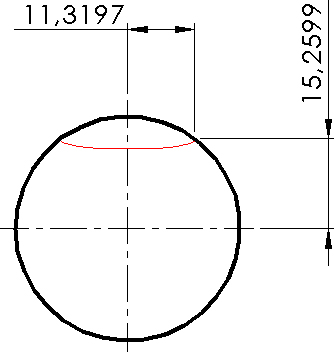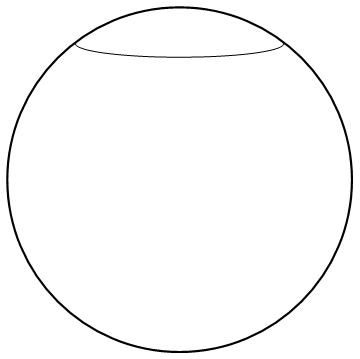I'm doing a geometry study between a circle and an ellipse.
After several attempts with Mathematica I had no choice but to use other software to obtain the values of the $r_x$, $\theta _1$ and $\theta _2$.
The results obtained by the other software were:
According to the documentation I need these parameters to get an ellipse:
$\text{Circle}\left[\{x,y\},\left\{r_x,r_y\right\},\left\{\theta _1,\theta _2\right\}\right]$
$r_x=11.4935$
$\theta _1=2 \pi +0.023$
$\theta _2=\pi -0.023$
With these values I was able to create what I wanted:
ClearAll["Global`*"]
g1 = Graphics[{Thickness[0.006], Circle[{0, 0}, 19]}];
g2 = Graphics[{Thickness[0.003], Circle[{0, 15}, {11.4935, 1.5}, {2 Pi + 0.023, Pi - 0.023}]}];
Show[g1, g2]
I did an analysis to get the points where there is the tangency of the geometries using the equation of the circle and the equation of the ellipse:
$ \left(x-x_0\right){}^2+\left(y-y_0\right){}^2=r^2$
$ \frac{\left(x-x_0\right){}^2}{a^2}+\frac{\left(y-y_0\right){}^2}{b^2}=1$
I noticed that the results were right
ClearAll["Global`*"]
a = 11.4935;
Solve[((x - 0)^2 + (y - 0)^2 == 19^2) && ((x - 0)^2/a^2 + (y - 15)^2/1.5^2 == 1), {x, y}] // N
${{x -> -11.3197 - 0.0000200237 I, y -> 15.2599 - 0.0000148534 I}, {x -> 11.3197 + 0.0000200237 I, y -> 15.2599 - 0.0000148534 I}, {x -> -11.3197 + 0.0000200237 I, y -> 15.2599 + 0.0000148534 I}, {x -> 11.3197 - 0.0000200237 I, y -> 15.2599 + 0.0000148534 I}}$
The question is as follows:
What should I do to get the values of the $r_x$, $\theta _1$ and $\theta _2$?
The geometries must be tangent, but I do not know how to do it ...














